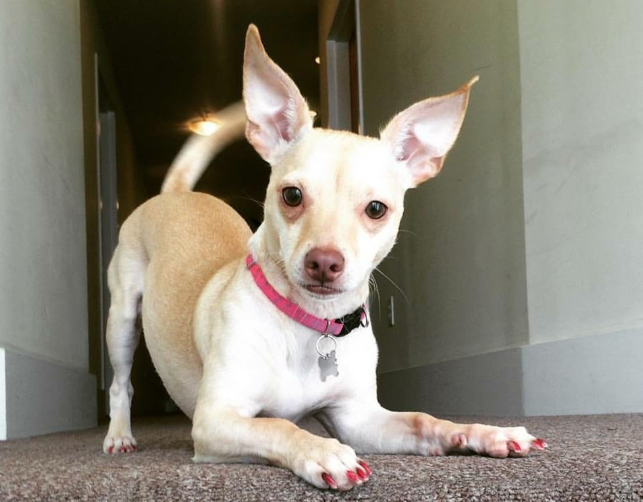Have you ever heard your yoga teacher describe one of their “greatest teachers” as a baby or pet? Upon first hearing that, I thought it was baloney. At the time, the most useful interpretation I could glean was that it perhaps related to patience.
One of my greatest teachers, Tara Brach, who I promise is a celebrated author and beloved adult human being, uses meditation techniques to draw her students into a compassionate heart space. This often involves visualizing in great detail an experience or memory that naturally inspires feelings of love and comfort, where the mind is calm and the heart is full.
She often describes this as taking refuge in the experience of boundless compassion. One of Tara’s techniques in finding refuge that helps me profoundly is her instruction to find this place by remembering a “person or pet.”
This resulted in my daily mantra: I am love. I am awareness. I am connectedness. I take refuge in love.
The last refrain, I take refuge in love, always involves my beloved pet, son, companion, savior, and teacher, Lucas-José. There are daily moments in our cuddles where I’m speaking and interacting effortlessly, without thought and inhibition. In those moments I am wholly myself, I have found refuge.
Yes, his toenails are pink. That is his favorite color, after all.
I draw on any memory of that experience in daily meditation, effectively retraining my brain to be happier and less anxious. And it works. I feel a shift in my body, my shoulders drop, the corners of my mouth curl up, and the grip in my belly releases. For the rest of the day, I feel more centered and resilient, less reactive to the life’s curve balls.
How does a 6kg rescue pet save my life every day, drawing me out of some of the darkest places I’ve ever been? To answer that question, we have to go back...way back. Between 20,000 and 40,000 years back, when dogs were wolves. It's commonly believed that humans domesticated wolves to help with hunting, however, new evidence has turned that paradigm on its head.
April Short at Alternet writes describes the model that ancient “humans used dogs to hunt doesn’t hold much water because humans were already successful hunters without wolves, and didn’t tend to be friendly towards other carnivorous species….The wolves that were bold but aggressive would have been killed by humans, and so only the ones that were bold and friendly would have been tolerated.”
Selecting dogs with hyper-social behavior made bonding easier over the years, also resulting in phenotypes we would describe as endearing to humans: floppy ears, silky coats, wagging tails...in other words, cute. Conversely, and in the same vein, few things are as blood curling as the sound of a dog in distress.
As it turns out there is a genetic explanation for these friendly proto-dogs. The friendlier wolves likely had a mutation “which involves stunted social development and overly-friendly behavior.”
This is why dogs are able to be easily trained and are active during the same hours as their owners, as opposed to truly nocturnal animals (Livescience).
As ancient humans shifted towards an agricultural lifestyle, both humans and dogs developed an increased tolerance for starchy foods. In dogs, this is possible because they have a gene called AMY2B, which is 28 times more active in dogs than in wolves, thus further differentiating dogs from wolves as a result of human intervention.
So basically these mentally ill wolves who didn’t know any better endeared themselves to humans and we intervened in their evolution to suit our emotional needs, simultaneously rendering them incapable of surviving on their own.
And then we abandoned them. Any developing country will have an obvious epidemic of neglected dogs. Developed countries have this epidemic, too, but we invest great resources in the public sector to remove any reminder of our great abandonment from our consciousness. We would rather send them to their deaths than deal with the consequences of our collective behavior.
Most great tragedies reflect the nature of the ego, and in this case, the rampant proliferation of neglected dogs is a reflection of our egoic nature on a societal level. The ego can be understood when we understand how humans typically respond to discomfort. As individuals we find something to bring us comfort, and unless we address the underlying issue, we abuse our comfort object, and ultimately find ourselves in a crisis we’ve created, usually more complex and painful than the original experience we so desperately sought to avoid. So what do we do?
Do we make peace with it, throwing cooked rice and scraps of chicken outside every night? Or do we go to murderous lengths to adopt an out-of-sight, out-of-mind mentality? Do we opt for an expensive boutique route, equating value with money and hoping it will somehow be more comforting? Or perhaps the most radical solution of all is to take ownership.
Without Lucas’s love, and my love for him, I would not ask these questions of myself or of you. I would be ignorant to humanity's role in this crisis or even the very existence of this crisis. I would not gently weep in the back seat of a Balinese taxi as we drive past unwanted, completely bald-from-mange dogs that would have once made me cringe, but now make me sad. Because the one thing this dog wants more than anything, as a result of our intervention, is to be loved and looked after. We have created a reflection of our own humanity, because we wanted the exact same things first. To be loved and looked after.
Without Lucas, I would be ignorant to the boundless joy that exists in my own heart space and to the truth that this refuge is reachable in any moment. Without his enthusiastic greeting I would easily forget how much love exists in any moment, including this one. This is what I mean when I say Lucas is one of my greatest teachers.


